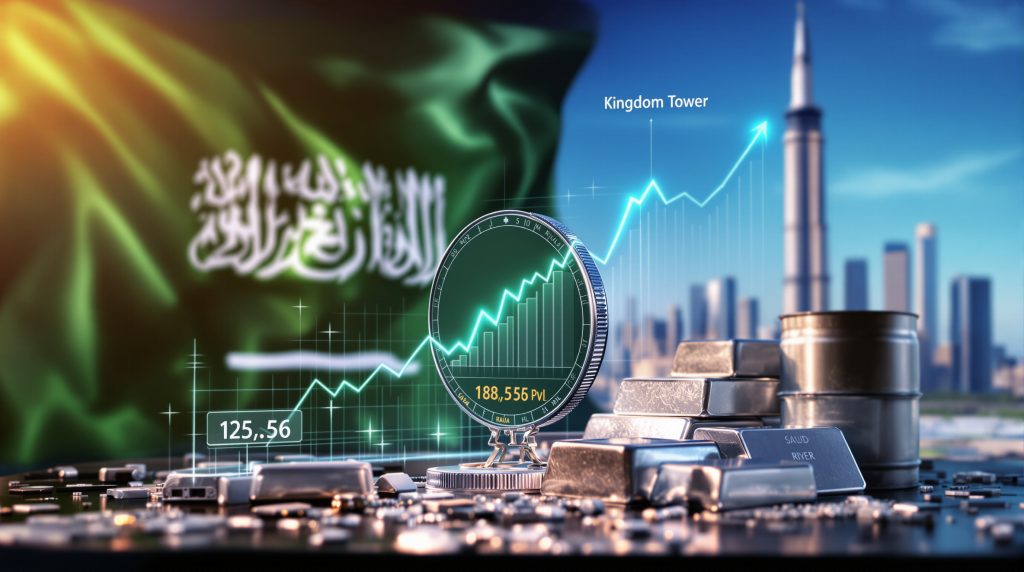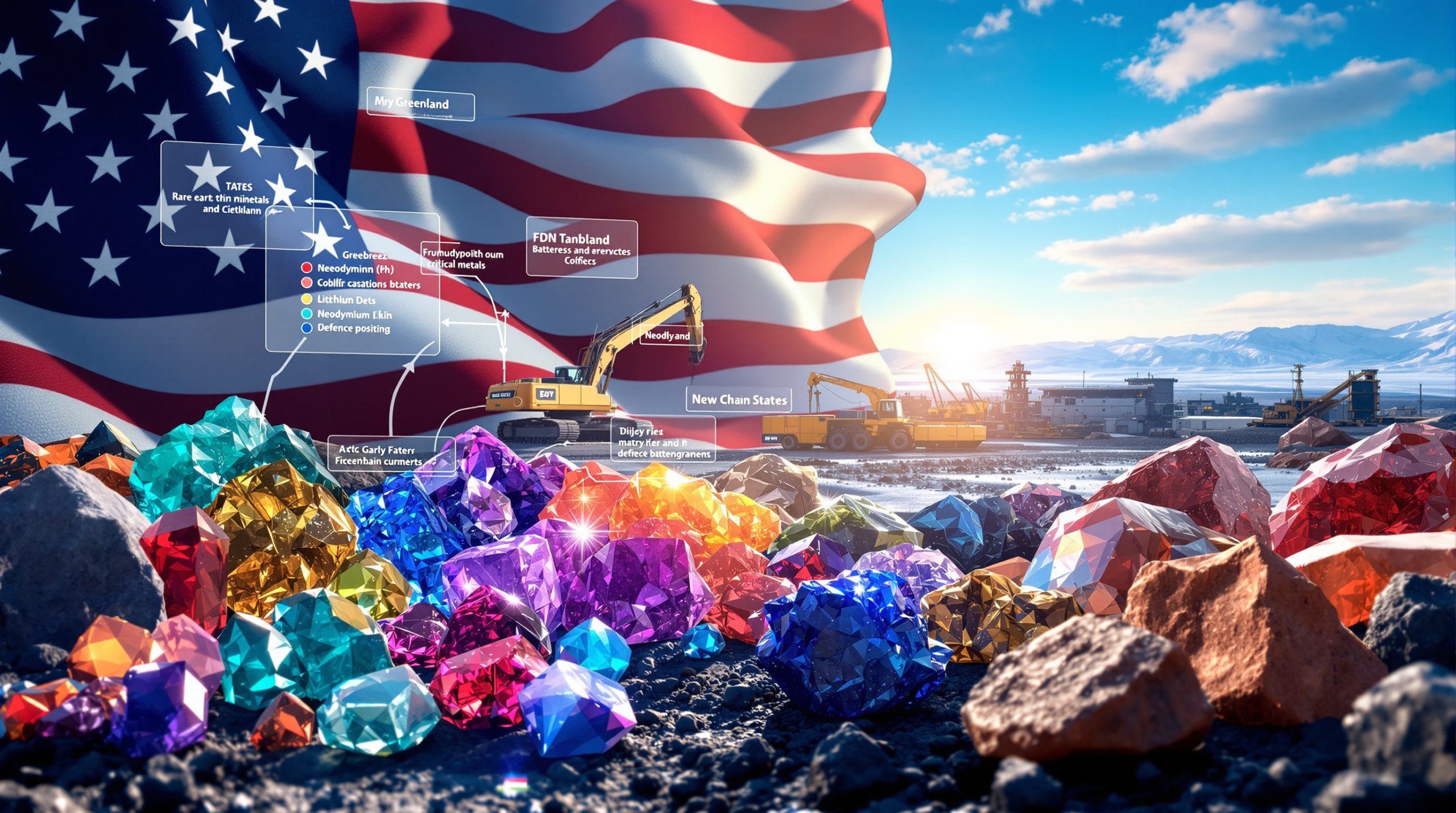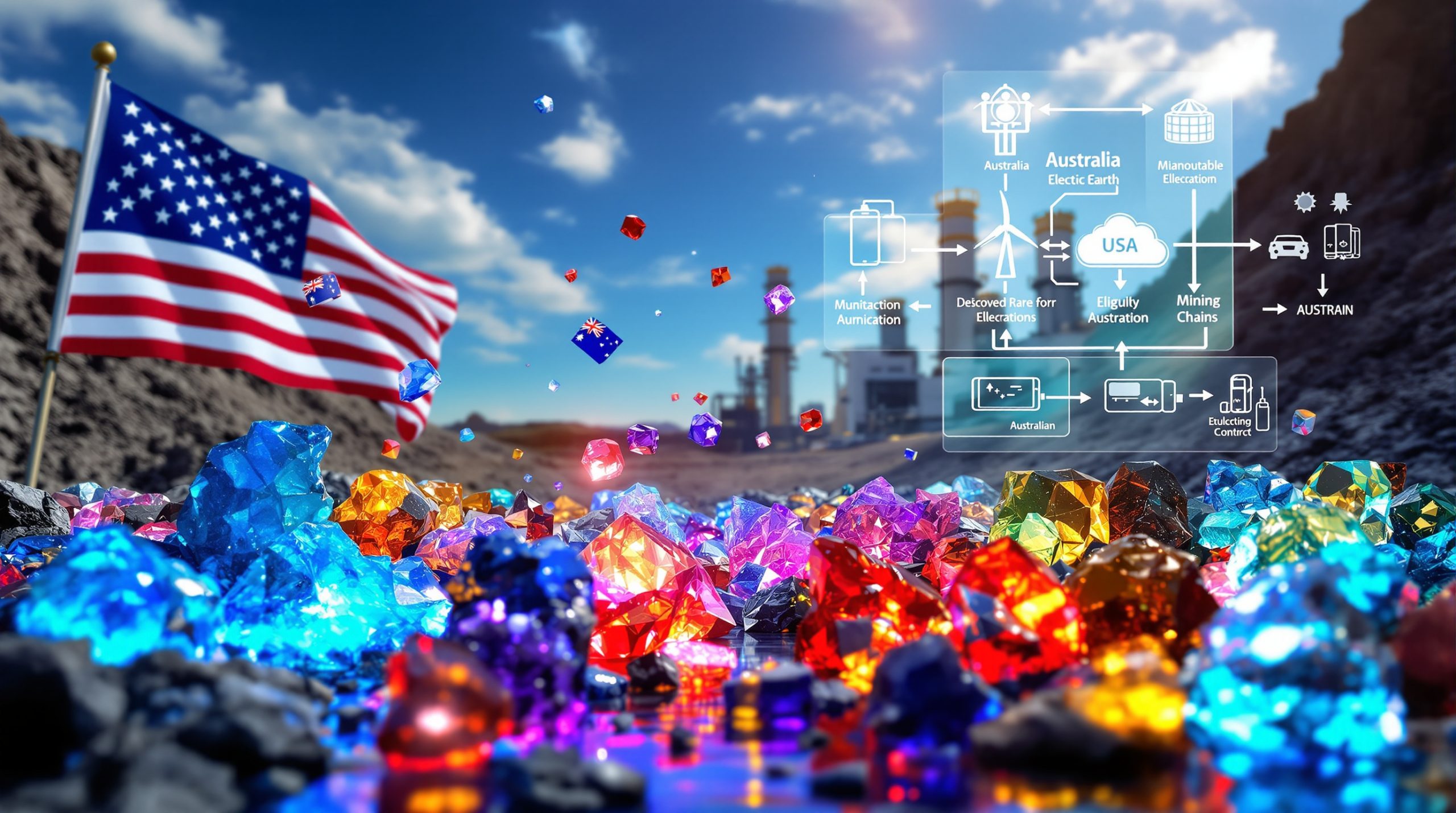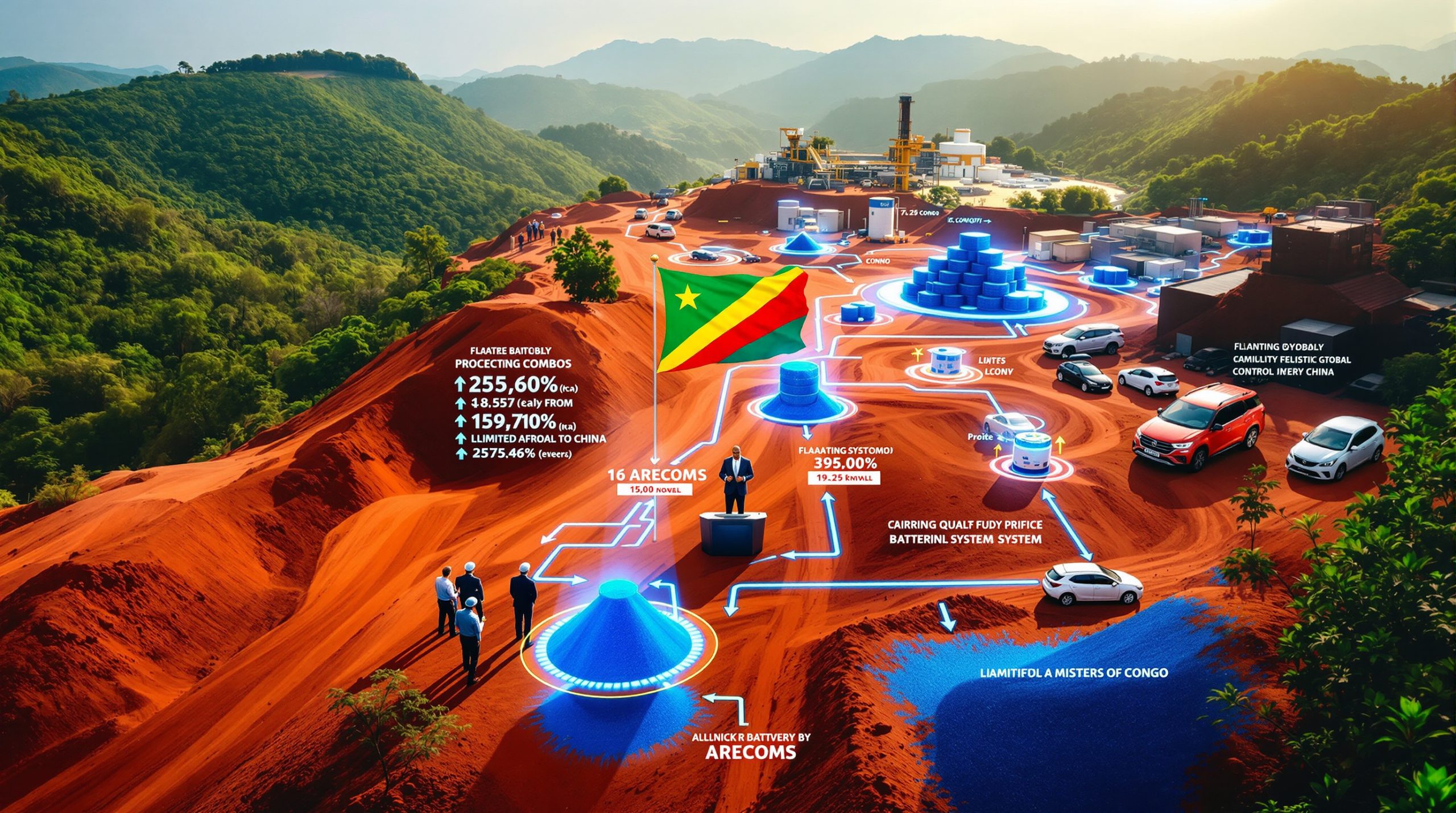What Is Driving Saudi Arabia's Interest in Silver?
The Unprecedented Silver Price Surge
Silver markets have experienced remarkable price movements recently, with the precious metal reaching $41 per troy ounce in recent trading sessions. This surge represents more than just a typical commodity fluctuation. In European markets, silver prices measured in euros per kilogram have achieved unprecedented all-time highs, surpassing any level recorded in the entire 23-year history of the euro currency. These dramatic price movements signal fundamental changes in how global markets value this versatile metal.
The steady climb in silver prices reflects shifting investor sentiment and growing industrial demand, creating perfect conditions for the current rally. Market specialists have been discussing these fundamentals for years, but we're now witnessing a genuine acceleration in silver's upward momentum due to market transformation dynamics.
Silver's New Status as a Critical Metal
A major catalyst for silver's recent performance was the United States government's official designation of silver as a critical metal. This classification acknowledges silver's strategic importance to national security and economic stability. The recognition of silver as the second most versatile substance on Earth reflects its irreplaceable role across multiple industries.
Silver's critical applications span renewable energy (particularly solar panels), electronics, medical devices, water purification systems, and defense technologies. This official recognition has fundamentally altered how institutions and investors perceive silver's long-term strategic value.
Unlike many commodities, silver possesses unique properties that make it irreplaceable in certain manufacturing processes. As one specialist noted, "there are processes in which there is no substitute for silver" – a reality that ensures consistent demand regardless of price fluctuations or tariff impacts on silver.
Industrial Demand Creating Supply Pressure
The global silver market currently faces a substantial supply deficit, with industry analysts projecting a shortfall of approximately 4,600 tonnes in 2024. This imbalance between production and consumption is expected to worsen after peak mine production occurs in 2026, creating fundamental supply deficits in silver that supports bullish price forecasts.
A critical factor amplifying price sensitivity is the relatively small size of the silver market compared to other commodities and financial assets. Market experts often observe that "one billionaire could corner the silver market" – highlighting how vulnerable silver prices are to even modest institutional buying.
This supply constraint is particularly concerning for technology manufacturers who rely on silver for production processes. Companies dependent on physical silver are now calculating their annual consumption requirements and considering securing larger inventories to hedge against future price increases and potential supply disruptions.
How Is Saudi Arabia Positioning Silver in Its Financial Strategy?
Saudi Central Bank's Strategic Silver Investments
In a move that surprised many market observers, the Saudi Central Bank has invested approximately $40.4 million in silver-related exchange-traded funds during recent quarters. This allocation reportedly includes $30.58 million in the iShares Silver Trust (SLV), which holds physical silver, and $9.8 million in the Global X Silver Miners ETF (SIL), focusing on companies that mine silver.
While these investments represent a modest portion of Saudi Arabia's total reserves, the strategic significance far outweighs the dollar amount. The decision by a major petroleum-exporting nation to diversify into silver signals a shifting perception of strategic assets in a changing global economy.
Industry experts note there are important nuances to this investment strategy. The structure appears to involve subsidiary investment vehicles rather than direct central bank holdings, creating a distinction in how these assets are classified within Saudi Arabia's broader financial framework.
Silver's Role in Saudi Arabia's Asset Diversification
Saudi Arabia's silver balance sheet investments should be viewed as part of a broader asset management and sovereign wealth strategy rather than a formal addition to monetary reserves. This distinction is important, as silver is not yet classified as a monetary reserve asset in international financial frameworks, unlike gold which has maintained this status for centuries.
The investment reflects a calculated approach to portfolio diversification while maintaining traditional reserve structures. By gaining exposure to silver through exchange-traded funds rather than physical bullion, Saudi Arabia maintains liquidity while participating in potential price appreciation of this strategic metal.
This approach also allows Saudi Arabia to avoid the logistical challenges of physical silver storage while still benefiting from the metal's growth potential. The decision to include both physical silver exposure through SLV and mining company exposure through SIL demonstrates a sophisticated understanding of different avenues for precious metals investment.
Alignment with Saudi Arabia's Economic Transformation
Saudi Arabia's interest in silver aligns perfectly with its Vision 2030 economic transformation plan, which emphasizes technological development, renewable energy, and reduced dependence on petroleum exports. Silver's critical role in solar panels, electric vehicles, 5G infrastructure, and semiconductor manufacturing makes it strategically valuable to Saudi Arabia's future economic ambitions.
As Saudi Arabia diversifies its economy away from oil dependence, investments in metals essential to emerging technologies represent forward-thinking asset allocation. The kingdom's leadership recognizes that future economic growth depends on industries where silver plays a critical role.
This strategic alignment between silver's industrial applications and Saudi Arabia's economic transformation goals suggests that these initial investments could be just the beginning of a larger commitment to strategic metals as part of the kingdom's financial positioning.
What Does This Mean for Global Silver Markets?
Central Bank Validation Changing Investor Perception
The Saudi Central Bank's decision to add silver exposure to its balance sheet represents a significant institutional validation of silver as a strategic asset. This endorsement is influencing broader market sentiment, particularly among large investors who may have previously overlooked silver's investment potential.
Market specialists observe that "the investment or the recognition of central banks of the scarcity of silver, the fundamental analysis of silver and how precious it actually is, is starting to wake up some of the bigger investors as well." This institutional recognition could trigger a cascading effect as other investors reconsider their asset allocation strategies.
The psychological impact of central bank participation extends beyond direct market effects. It signals a broader recognition of silver's dual role as both an industrial metal and a store of value, potentially attracting investors who previously focused exclusively on gold for precious metals exposure.
Market Size Vulnerability to Institutional Buying
The silver market's relatively small size compared to other asset classes makes it particularly sensitive to institutional investment flows. With a total market capitalization significantly smaller than gold, even modest allocation shifts by large investors can create substantial price movements.
This vulnerability to institutional buying becomes particularly significant when major financial institutions begin viewing silver as a strategic holding. As more central banks and sovereign wealth funds consider silver investments, the potential for supply-demand imbalances increases substantially.
Industry analysts note that corporations dependent on silver for manufacturing processes are acutely aware of this dynamic. Companies that require physical silver for production are now evaluating their annual consumption requirements and considering securing larger inventories to hedge against future price increases and potential supply constraints.
Comparison: Silver vs. Traditional Reserve Assets
Unlike gold, which has traditionally dominated central bank reserves, silver has historically been overlooked as a monetary reserve asset. This historical divergence creates different investment characteristics and market dynamics:
| Aspect | Gold | Silver |
|---|---|---|
| Global central bank reserves | 35,000+ tonnes | Minimal formal reserves |
| Market size | $13.7 trillion | $1.5 trillion |
| Industrial consumption | 10-15% of annual production | 50-60% of annual production |
| Price volatility | Moderate | High |
| Current central bank trend | Active accumulation | Emerging interest |
This comparison highlights why silver's price movements can be more dramatic than gold's when institutional interest increases. The smaller market size combined with higher industrial consumption creates more potential for supply constraints and price appreciation when investment demand rises.
How Are Geopolitical Factors Influencing Silver's Strategic Value?
Trade Tensions and Supply Chain Security
Increasing global trade tensions and tariff policies are heightening concerns about supply chain security for critical materials like silver. These geopolitical factors add another dimension to silver's investment appeal beyond traditional supply-demand fundamentals.
While market specialists acknowledge that "trade wars only know losers," they also recognize that silver's irreplaceability in critical manufacturing processes means demand persists regardless of trade barriers. As one expert noted, "however expensive silver would be, no matter how high the tariffs could rise, there are processes in which there is no substitute for silver."
This irreplaceability transforms silver from merely a commodity into a strategic resource that countries and companies must secure regardless of market conditions. As governments increasingly recognize the strategic importance of critical minerals, silver's value proposition extends beyond its price in dollars or euros.
De-dollarization Trends and Precious Metals
Saudi Arabia's silver investments coincide with broader international trends toward reducing dollar dependence in reserve assets. While gold remains the primary beneficiary of de-dollarization efforts, silver's industrial importance combined with its monetary history makes it an attractive complementary asset.
Countries seeking to diversify away from traditional currency reserves increasingly view precious metals as a hedge against financial system instability and currency devaluation. Silver offers a unique combination of industrial utility and monetary attributes that aligns with these diversification goals.
The current European economic situation illustrates why central banks might seek alternative reserve assets. With major European economies facing significant debt challenges—France reportedly carrying debt of 3.3 trillion euros (more than 140% of GDP) with a deficit of 6%—the foundation for traditional reserve currencies appears increasingly unstable.
Regional Competition for Strategic Resources
Saudi Arabia's move into silver markets may trigger similar actions by other regional powers seeking to secure access to critical industrial metals. This competitive dynamic could accelerate institutional investment in silver, further tightening an already constrained supply situation.
As countries recognize the strategic importance of metals essential to technological development and economic security, competition for these resources intensifies. Silver's dual role as both a precious metal and an industrial input makes it particularly valuable in this context.
The potential for a regional "resource race" adds another bullish factor to silver's price outlook. If multiple sovereign wealth funds and central banks begin accumulating silver exposure simultaneously, the impact on this relatively small market could be substantial.
What Are the Investment Implications of Saudi Arabia's Silver Strategy?
Physical Ownership vs. Financial Exposure
Saudi Arabia's approach of investing in silver ETFs rather than physical bullion highlights the different strategies available to institutional and individual investors. While ETFs provide convenient market exposure and liquidity, physical ownership offers additional benefits during financial system stress.
Market specialists emphasize the importance of starting with physical metal: "If you don't have any gold or silver, buy it. You know, there is no other option." For individual investors, beginning with silver coins or small bars provides tangible security before considering larger allocated storage solutions.
The progression recommended by experts typically follows a pattern: start with physical metal in personal possession, then transition to allocated storage with legal ownership as investment size increases. As one specialist advised, regardless of the storage solution, "it has to be allocated. And you have to have legal ownership of it."
Silver's Dual Role as Monetary and Industrial Metal
Silver's unique position as both a precious metal with monetary history and an essential industrial input creates distinct investment characteristics. This dual nature may provide inflation protection similar to gold while offering growth potential tied to technological advancement.
Unlike purely monetary assets or purely industrial commodities, silver bridges both worlds. This creates potential for outperformance during both inflationary periods and times of technological expansion and industrial growth.
Saudi Arabia's investment acknowledges this multifaceted value proposition. By gaining exposure to both physical silver and silver mining companies, the kingdom positions itself to benefit from both monetary and industrial demand drivers.
Price Expectations Amid Monetary Policy Shifts
Central banks globally are pivoting toward interest rate cuts, with the European Central Bank already reducing rates to 2% and further cuts anticipated. These monetary policy shifts traditionally support precious metals prices, as lower interest rates reduce the opportunity cost of holding non-yielding assets.
Market specialists note that rate cuts will certainly help precious metals prices, but underlying economic fundamentals may be even more significant. As one expert observed, "it is the destruction, the fundamental destruction of these economies with no clean way out except for a world of hurt" that ultimately drives precious metals as safe haven assets.
Saudi Arabia's timing suggests strategic positioning ahead of an expected accommodative monetary cycle. By establishing silver positions before potential rate cuts drive broader investor interest in precious metals, the kingdom may benefit from both monetary policy tailwinds and increasing industrial demand.
How Does Silver Fit Into Saudi Arabia's Overall Financial Position?
Saudi Arabia's Reserve Composition
The Saudi Central Bank maintains a substantial balance sheet, with foreign exchange reserves forming a significant portion of its financial resources. Silver-related investments currently represent a small but symbolically significant allocation within this broader portfolio.
This modest initial allocation allows Saudi Arabia to gain strategic exposure to silver while maintaining its traditional reserve structure. By starting with a relatively small position, the kingdom can observe market dynamics and adjust its strategy based on performance and evolving market conditions.
The approach reflects prudent risk management while still signaling recognition of silver's strategic importance. Rather than making a dramatic shift in reserve composition, Saudi Arabia is methodically incorporating new elements into its financial positioning.
Strategic Metals in National Security Planning
Saudi Arabia's interest in silver reflects growing recognition that strategic metals are becoming increasingly important to national security planning. As countries compete for access to critical resources, financial exposure to these metals provides both economic and strategic benefits.
Beyond immediate investment returns, positioning in metals essential to technological development represents forward-looking strategic planning. Countries that secure access to or exposure to these resources gain advantages in economic development and technological self-sufficiency.
This perspective transforms what might appear to be purely financial decisions into elements of national security strategy. Silver's growing importance in renewable energy, electronics, and defense applications makes it particularly valuable from this strategic perspective.
Future Expansion Potential
While Saudi Arabia's initial silver investments remain modest, they establish a framework for potential expansion. If the strategic thesis proves correct and silver continues to appreciate in value and importance, the kingdom could increase its allocation substantially.
The current approach through exchange-traded funds provides flexibility for future expansion. Saudi Arabia can easily increase its exposure through these vehicles or potentially transition to other forms of silver investment as its strategy evolves.
Market observers will be watching closely for signs of increased allocation or shifts in investment vehicle preference. Any expansion of Saudi Arabia's silver strategy could have significant implications for global silver markets given the potential size of the kingdom's total investment capacity.
What Should Investors Learn From Saudi Arabia's Silver Strategy?
Diversification Beyond Traditional Safe Havens
Saudi Arabia's silver investments demonstrate the value of looking beyond traditional safe haven assets. While gold remains the cornerstone of precious metals allocation, silver offers complementary benefits with potentially higher growth prospects.
Individual investors can apply similar diversification principles, allocating across different precious metals and investment vehicles. As one market specialist advised when asked about coins, bars, or mining stocks: "all of the above" – suggesting a diversified approach to precious metals exposure.
This diversification strategy recognizes that different metals may outperform during different market conditions. Silver's industrial demand component may provide growth potential beyond gold's more purely monetary role, particularly during periods of technological expansion.
The Importance of Physical Ownership
Financial experts emphasize the importance of direct ownership of precious metals as part of a comprehensive investment strategy. As one advisor noted, physical metals provide "always my ticket home" security during financial system disruptions when electronic payments or credit systems might fail.
This perspective aligns with traditional Middle Eastern approaches to wealth preservation, which have historically emphasized tangible assets. The practice of carrying some precious metals while traveling exemplifies this security-focused mindset: "Whatever happens, you know, if due to a bank glitch, I can no longer use my credit card or debit card, I can always use gold."
For individual investors, starting with physical coins or small bars creates familiarity with precious metals while providing immediate financial security. As investment size increases, allocated storage with clear legal ownership becomes increasingly important.
Long-Term Perspective on Monetary Metals
Saudi Arabia's silver strategy suggests taking a long-term view on precious metals rather than focusing on short-term price movements. The fundamental drivers—including supply deficits, industrial demand growth, and monetary policy trends—support a multi-year bullish outlook.
Market specialists who have advocated for precious metals for 15+ years emphasize patience and perspective. Current price movements represent the beginning of a longer-term trend rather than a temporary phenomenon.
This long-term perspective aligns with Saudi Arabia's typical investment horizon for strategic assets. Rather than seeking quick returns, the kingdom appears to be positioning for structural changes in the global monetary and industrial landscape where silver plays an increasingly important role.
What Are the Key Takeaways About Saudi Arabia's Silver Balance Sheet Strategy?
A Strategic Rather Than Monetary Move
Saudi Arabia's silver investments represent a strategic asset allocation decision rather than a fundamental change to monetary reserves. This approach allows the kingdom to gain exposure to silver's potential appreciation while maintaining traditional reserve structures.
The nuanced structure of the investment—through ETFs rather than direct bullion holdings—reflects careful consideration of how to incorporate silver exposure into a sophisticated financial framework. This strategy provides market participation while avoiding the logistical challenges of physical silver storage and transportation.
By positioning silver as a strategic investment rather than a formal reserve asset, Saudi Arabia maintains flexibility while still signaling recognition of silver's growing importance in the global economy and financial system.
Alignment With Industrial and Energy Transition
The kingdom's silver strategy aligns perfectly with global industrial and energy transition trends. Silver's critical role in renewable energy, electric vehicles, and advanced electronics positions it at the intersection of technological advancement and sustainable development.
As Saudi Arabia pursues economic diversification beyond petroleum exports, investments in metals essential to emerging technologies represent forward-thinking asset allocation. The kingdom's leadership recognizes that future economic growth depends on industries where silver plays a critical role.
This alignment between financial strategy and economic transformation goals demonstrates sophisticated long-term planning. Rather than viewing silver merely as a financial asset, Saudi Arabia appears to recognize its strategic importance to future industrial and technological development.
Signal Value to Global Markets
Perhaps most significantly, Saudi Arabia's move into silver markets sends a powerful signal to global investors about the metal's strategic importance. This institutional validation may accelerate broader recognition of silver's fundamental value proposition.
The psychological impact extends beyond direct market effects. When major central banks and sovereign wealth funds begin incorporating new assets into their strategies, other institutional investors take notice. This attention from sophisticated market participants often precedes broader market recognition.
Market specialists observe that institutional recognition of "the scarcity of silver, the fundamental analysis of silver, and how precious it actually is" is awakening interest among larger investors. This cascading effect could significantly impact silver markets over time as more institutions reconsider their precious metals allocation strategies.
Frequently Asked Questions About Saudi Arabia's Silver Strategy
Why is Saudi Arabia investing in silver now?
Saudi Arabia appears to be strategically timing its silver investments to capitalize on fundamental supply-demand imbalances while diversifying its asset portfolio beyond traditional holdings. The kingdom recognizes silver's growing importance in critical industries aligned with its economic transformation goals.
The timing coincides with significant shifts in global monetary policy, with central banks pivoting toward interest rate cuts. This accommodative monetary environment traditionally supports precious metals prices, making the current period advantageous for establishing positions.
Additionally, the recent U.S. designation of silver as a critical metal has altered market perceptions of silver's strategic importance. By moving early in response to this changing sentiment, Saudi Arabia positions itself ahead of potential broader institutional interest in silver.
How does silver compare to gold as a reserve asset?
While gold remains the dominant precious metal in central bank reserves due to its larger market size and lower volatility, silver offers potentially higher growth prospects due to its industrial applications and smaller market capitalization. Silver is currently held as an investment asset rather than a formal monetary reserve by Saudi Arabia.
A notable comparison recently emerged between gold and Bitcoin, with gold prices measured in dollars per kilogram once again exceeding Bitcoin's price after Bitcoin pulled back from its recent highs. This highlights gold's enduring value despite competition from newer asset classes.
For investors considering both metals, silver's higher volatility presents both greater risk and potential reward. Silver's price movements typically amplify gold's direction, making it a higher-beta precious metals play that may outperform during strong bull markets.
Could other central banks follow Saudi Arabia's example?
Saudi Arabia's silver investments could indeed inspire similar moves by other central banks seeking to diversify their asset portfolios. However, given silver's smaller market size and higher volatility, most central banks would likely maintain modest allocations relative to their overall reserves.
Regional economic powers might be the first to follow Saudi Arabia's example, particularly those also seeking to reduce dollar dependence or position for technological development. Countries with significant industrial bases might recognize silver's strategic importance earlier than others.
Any broad adoption of silver as a central bank asset would represent a significant shift in institutional perception. While gold has maintained its status in central bank reserves for centuries, silver has been largely absent from this role in modern times despite its historical monetary use.
What does this mean for silver prices long-term?
Saudi Arabia's entry into silver markets adds institutional validation to the bullish case for silver. Combined with structural supply deficits and growing industrial demand, increased central bank interest could support substantially higher silver prices over the coming years.
Market specialists point to the dramatic rise in European silver prices measured in euros per kilogram, which have reached all-time highs in the euro's 23-year history. This price action suggests fundamental revaluation rather than mere currency effects.
For long-term investors, silver's dual role as both a precious metal and industrial input creates multiple demand drivers. The combination of monetary demand during financial uncertainty and industrial consumption during technological expansion provides support from different economic scenarios, furthering the case for silver market squeeze insights and making silver squeeze strategies increasingly important for investors.
Want to Capitalize on the Next Major Mineral Discovery?
Discover how to position yourself ahead of the market with real-time alerts on significant ASX mineral discoveries, powered by Discovery Alert's proprietary Discovery IQ model. Visit the dedicated discoveries page to understand why historic discoveries can generate substantial returns and begin your 30-day free trial today.




